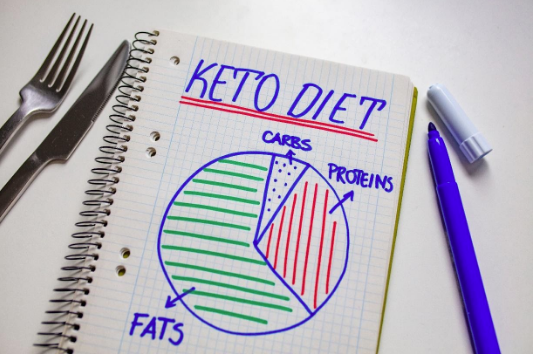
Ketogenic diet has taken every nook and cranny of the world by storm as the famous personalities and celebrities vow for its efficiency in quickly reducing the stubborn fats and other health miracles. Seeing the much-hyped anecdotes on various online platforms, one might wish to kick-start the keto diet without possessing much knowledge about the dietary plan.
If you are hell-bent in starting the high-fat, low-carb and moderate-protein diet, you should research well about the basics so that it proves to be a boon to you. This is because following a keto diet will result in various changes in the body like the dependence on carb for energy shifts to burning fat for producing fuel.
Here we’ve master-crafted some keto basics that everyone should know before starting the high-carb diet.
1. STAY AWARE ABOUT YOUR NET CARB INTAKE:
It is very crucial to have consumption of low carbohydrate diet to keep the body in state of ketosis in which the energy is produced by breaking down the fat molecules. It might surprise you that you should not have more 35 grams of total carbohydrate in a day. In case you have more than the limit that’s been set, it’d be difficult for the body remain in ketosis
So, keeping a close vigil at your carbs consumption will help you get into ketosis more quickly (as long as you consume the optimum amounts of protein — more on that coming up later). Also, pay attention to nutritional information and the labels, and ensure that your net carb consumption is lesser than 25 grams per day.
Pro Tip: While keto cuts out most major sources of carbs, you should focus more on limiting processed carbs, such as crackers and cookies, while still relishing healthy whole grains like oats and brown rice.
2. PILE ON THE RIGHT KINDS OF FAT:
Fat doesn’t actually deserve its bad rap! In fact, it can make you feel full faster since it takes longer to digest than other nutrients. What’s more; as you slowly make transition into the ‘Keto lifestyle’, you are training your body to utilize fats as its main source of energy. As a result, between 70-80% of your daily caloric requirement should be fulfilled by fats!
But Beware: Not all fats are undeniably great for you. While the saturated fats found in dairy and meat products are no longer the devils they were once assumed to me, many credible health organizations like the American Heart Association, suggest limiting your saturated fat intake to just 13 grams a day. Most experts, however, recommend eating more monounsaturated fats that are mostly found in plant-based foods like avocados and olive oil.
3. GRAB THE OPTIMUM AMOUNTS OF PROTEIN:
Did you know that between 15-25% of your daily keto-calories should be derived from protein? Too little, and your body starts cannibalizing your muscle tissues to fulfill its protein requirements, too much, and you may feel full enough to refrain from eating an adequate amount of fat to feel energetic.
So, remember you cannot just eat eggs and steak all day long while following a Ketogenic diet! Nutritionists recommend keeping protein levels between 10 and 15 percent of total calories.
Pro Tip: To step up your fat intake while keeping your protein levels in control, make sure to incorporate foods that are high in fat but moderate in protein such as: coconut oil, olives, avocados, cheese, chia/flax seeds, and butter.
4. TRACK AND ADJUST YOUR MACROS:
If you can strictly follow those four rules, you can easily get into ketosis and start burning fat straight away! But in order to make sure that you’re doing it successfully, it will be great to do some degree of tracking.
To begin with, figure out what your macros should be and then keep a close track at them for the next three weeks. You can make use an app like MyFitnessPal and input the quantity of foods you eat each day! What’s more; always track your weight. If it goes down, Kudos, you’re probably doing it right.
5. DRINK PLENTY OF WATER:
Due to its diuretic nature, Keto diet makes you lose more water weight as compared to a high carb diet. Due to very low carb intake, your body quickly utilizes your stored carbohydrates or glycogen in the muscles. And because glycogen keeps up a lot of water, your water levels drop off quite fast. This is why many people experience the “keto flu” in the first few days of ketosis!
Pro Tip: As a general rule of thumb, drink about half your body weight in fluid ounces of water. For instance, if you weigh around 175 lbs, then you should drink at least 90 fluid oz. of water.
